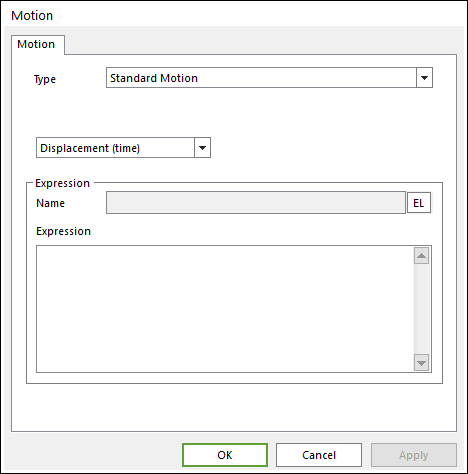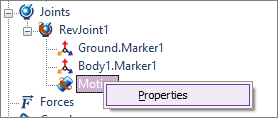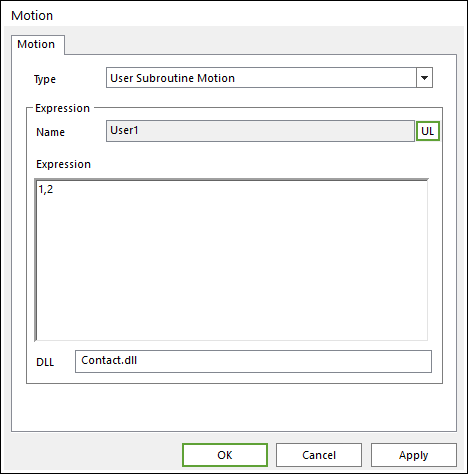6.2.1.4. Motion
A motion is used to prescribe the relative motion of Revolute, Translational, Cylindrical, CMotion, and PTCV joints by Function Expression or MOTION_USUB in user subroutine. The motion is the function of only time, variables, and diff variables. To use the motion, the user must define an expression in the Expression List dialog box.
Step to Use an Expression
Check the Include Motion option on the Joint property page.
Click Motion on the Joint property page as shown in the Figure 6.141. Or open the Motion property page directly on the Database pop-up menu.

Figure 6.141 Motion dialog box [Standard type]

Figure 6.142 Database pop-up menu of Motion dialog
Choose an expression type.
Displacement (time): Defines as the displacement type.
Velocity (time): Defines as the velocity type. Additionally, an initial displacement can be specified. In rotation, the unit is radian, and in translation, it follows the system unit.
Acceleration (time): Defines as the acceleration type. Additionally, an initial displacement and velocity can be specified. In rotation, the unit is radian, and in translation, it follows the system unit.
Choose a type as Standard Motion.
Click EL, and then the Expression dialog box appears. If the user wants to use a pre-defined expression, select the number for the expression. Otherwise, the user must create an expression. Refer to Expression.

Figure 6.143 Expression List dialog box
Note
Step to Use a User Subroutine
Check the Include Motion option on the Joint property page.
Click Motion on the Joint property page as shown in the Figure 6.144. Or open the Motion property page directly on the Database pop-up menu

Figure 6.144 Motion dialog box [User Subroutine type]
Change a type to User Subroutine.
Click UL, and then the User Subroutine dialog box appears. If the user wants to use a pre-defined User Subroutine, select the number of user subroutines. Otherwise, the user must create a user subroutine. Refer to User Subroutine.

Figure 6.145 User Subroutine List dialog box